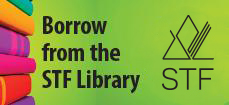Course Configurations
| (a) | Compare the earning potential of one’s chosen career to the costs associated with one’s desired future lifestyle. |
| (b) | Discuss ways (e.g., increase income and reduce expenses) to align the earning potential of one’s chosen career with the costs associated with one’s desired future lifestyle. |
| (c) | Suggest opportunities (e.g., side businesses, e-commerce, buy-and-sells, odd jobs, raises, promotions and bonuses) for earning additional income to support one’s desired future lifestyle. |
| (d) | Suggest ways to reduce expenses associated with one’s desired future lifestyle. |
| (e) | Investigate advantages and disadvantages (e.g., flexibility of hours, worker benefits and sick days) associated with one’s chosen career. |
| (f) | Discuss how one’s career path may involve multiple occupations or job loss (e.g., due to natural disaster, economic downturns, layoffs or medical issues) that require resilience and adaptability to overcome. |










This Canadian resource supports the Financial Literacy curriculum and provides information at a suitable introductory level. The resource is organized under six headings for a total of 15 modules.
Topics covered:
- Goals, Values and Decision-making
- Getting and Earning Money
- Spending Money and Taking Control
- Borrowing Money and Using Credit
- Saving and Investing Money
- Protecting Assets and Planning for the Future.
The resource includes:
- Student Guide, English or French, free online PDF version or hard copies can be ordered at a minimal fee
- Teacher's Guide, English or French, free online version


The Indigenous Edition of Money and Youth builds on the original resource from the Canadian Foundation for Economic Education, CFEE. Damon Johnston, President of the Aboriginal Council of Winnipeg, provided guidance rooted in traditional teachings and the Seven Sacred Laws. Vanessa Everett, CEO of Economic Development with the Keewatin Tribal Council, adapted the original version by Gary Rabbior of CFEE. Input from respected individuals across Turtle Island also helped shape this edition.
Topics covered:
- Goals, Values and Decision-making
- Getting and Earning Money
- Spending Money and Taking Control
- Borrowing Money and Using Credit
- Saving and Investing Money
- Protecting Assets and Planning for the Future.
The resource includes:
- Student Guide, English, free online PDF version or hard copies can be ordered at a minimal fee
- Teacher's Guide, English, free online version

